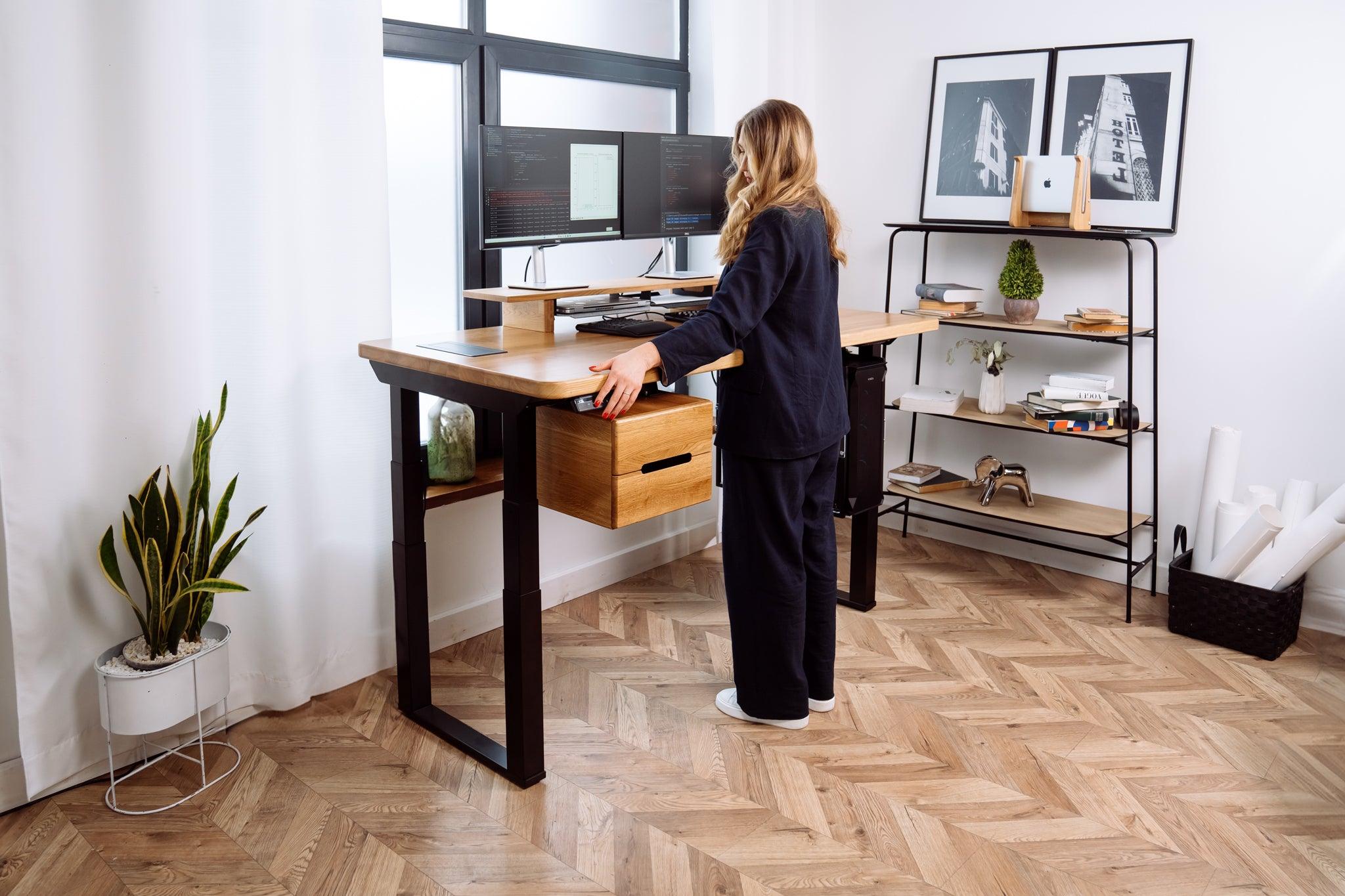In today's world, where many people spend most of their working day sitting at a computer, more and more attention is paid to the organization of the workplace. It is important not only to have a comfortable chair and table, but also to consider how different positions affect health and productivity. One of the most effective solutions for improving working conditions is the use of height-adjustable desks. This allows you to alternate sitting and standing during the day, reducing the negative impact of prolonged sitting.
Impact on back health
According to the study "Impact of a Sit-Stand Workstation on Chronic Low Back Pain" (Grant T. Ognibene, Wilson Torres, Rie von Eyben, Kathleen C. Horst), the use of sit-stand workstations can significantly reduce chronic low back pain back During the 12-week study, participants who used these workstations reported a 31.8% reduction in pain. This indicates that regular alternation of positions during work has a positive effect on the health of the back.
Improvement of blood circulation
Standing work improves blood circulation, which ensures a better supply of organs with oxygen and nutrients. This not only reduces the risk of cardiovascular diseases, but also increases productivity and overall tone of the body. When we sit for long periods of time, blood circulation slows down, which can lead to various health problems, including thrombosis and varicose veins.
Reducing the risk of obesity and diabetes
One of the main benefits of using standing desks is reducing the risk of obesity and diabetes. The constant alternation of sitting and standing positions activates muscles, increases energy expenditure and helps maintain an optimal weight. Research shows that even small changes in behavior, such as standing instead of sitting, can have a significant impact on metabolism and overall health.
Productivity improvement
Many companies that have implemented sit-to-stand workstations report an increase in the productivity of their employees. A study conducted at Texas A&M University found that using standing desks increased productivity by 23% within the first month and by 53% within six months. Workers who alternate positions report improved concentration, reduced levels of fatigue, and an overall increase in energy.
Psychological benefits
Standing work also has a positive effect on the psychological state of employees. Improving blood circulation and increasing physical activity help improve mood and reduce stress. Many users of standing desks report a reduction in symptoms of depression and anxiety, as well as an increase in overall life satisfaction.
Ergonomics and convenience
Desks with height adjustment allow each user to adjust the workplace to their individual needs. This is especially important for people of different heights and physical characteristics. The ergonomic design of such tables helps to maintain correct posture, reducing the load on the spine and muscles.
Flexibility in use
The use of height-adjustable desks makes it easy to adapt the workplace for different activities. For example, you may work standing during meetings or performing tasks that require high concentration, and sit during more routine tasks. This ensures maximum flexibility and comfort in work.
Conclusion
Investing in height-adjustable desks is an important step toward improving employee health and productivity. Benefits of standing include reduced back pain, improved circulation, reduced risk of obesity and diabetes, increased productivity, and improved psychological well-being. Organization of the workplace with the use of such tables contributes to the creation of a healthy and comfortable working environment, which positively affects the general well-being of employees.


to share:
WHAT A SEQUENTIAL LIFESTYLE CAN LEAD TO
Is an ergonomic chair worth the money?